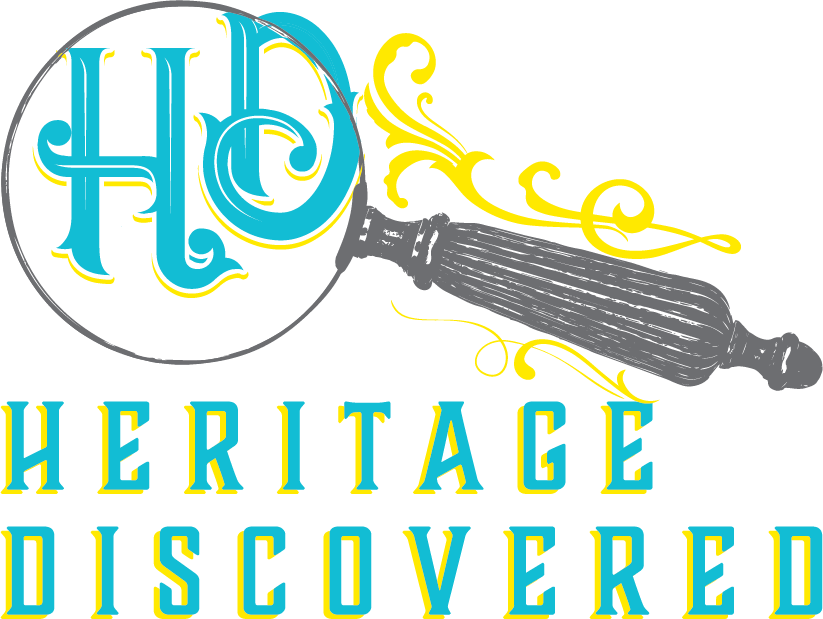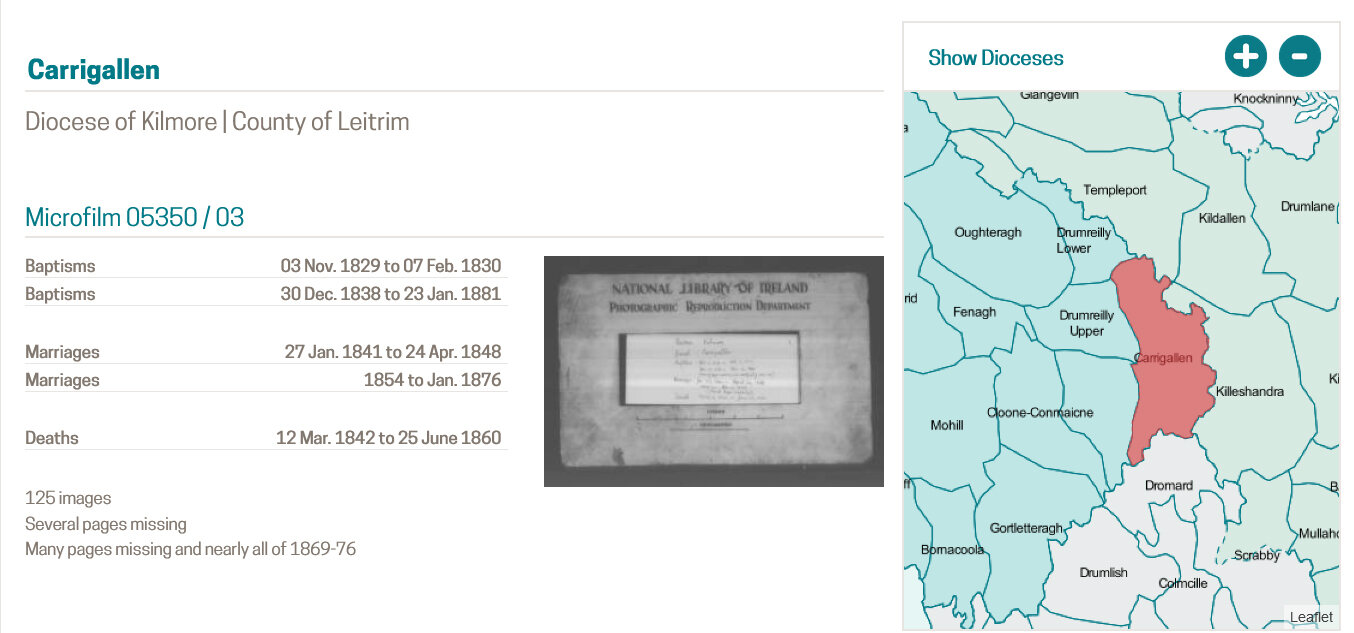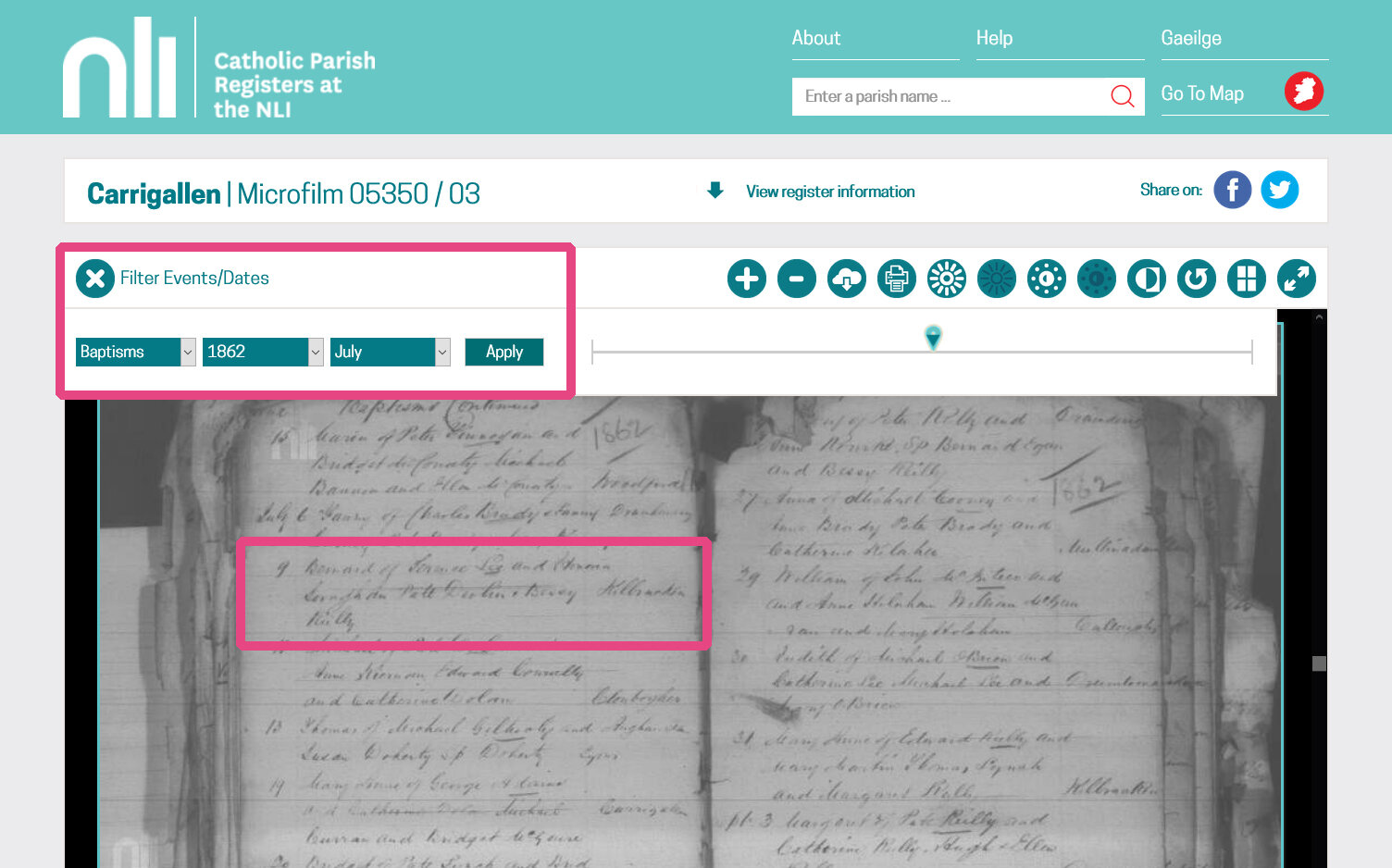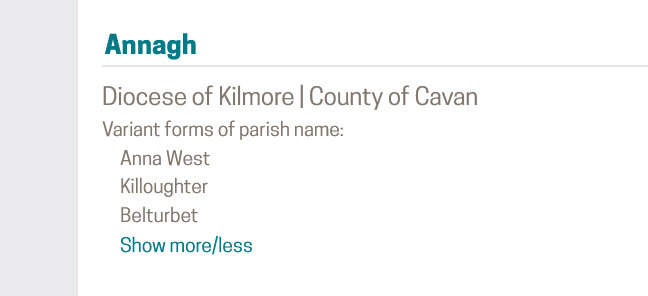Why I Love The National Library Of Ireland Parish Records And Why You Will Too
*This post may have affiliate links, which means I may receive commissions if you choose to purchase through links I provide (at no extra cost to you). All opinions remain my own.
Updated August 3, 2022
In this post
What is the NLI Catholic Parish Registers Collection
Other places to find the registers
What you’ll find in the records
Discovering the National Library of Ireland parish records collection opened up my entire Irish genealogy world. These Irish Catholic parish registers enabled me to add actual facts about births and marriages to my family tree for my branches from Ireland.
I grew up knowing I was Irish and when I started doing my family tree, I was curious about where in Ireland the family was from.
Little did I know back then about all the challenges with Irish genealogy. . .
For years, I struggled with not knowing even what county my Irish ancestors were from, let alone the townland or parish.
Can you relate?
My luck changed when I went to New England on a genealogy road trip and visited the cemeteries where my family is buried. One grave, for Thomas Slattery, had the parish and County where he was from in Ireland.
Eureka!
I was so excited, but I had no idea what to do with that information yet.
Then I discovered the National Library of Ireland’s Catholic parish registers.
And everything changed. Since then, I have found baptism records for six different branches in Irish parishes, and a couple of marriages.
Seeing actual records for my family in Ireland has been brilliant. When I first started researching my family tree two decades ago, I wasn’t sure I’d ever learn where they were from, much less find actual documentation. So many Irish records were lost that it’s a treasure to find anything.
What are the National Library of Ireland parish records?
The National Library of Ireland (NLI) has, of course, historical records from Ireland's history.
One premier collection is the Irish parish records, including Northern Ireland.
This collection came about back in 1949 when the NLI began to microfilm Catholic Church parish registers to preserve them. While civil registration began in 1864 in Ireland, it wasn’t consistent at first, so registers through 1880 were microfilmed. Some parishes have records later than that.
The project took 20 years, but now the NLI has copies of over 3,500 registers from 1,086 parishes.
These records are essential because so many other early Irish records were lost, destroyed, or never created in the first place. If your family left before 1901, as so many did, the registers may be the only record of specific people and families left.
About 373,000 images are held on a website reserved for the parish records.
Related posts:
What Are Naturalization Records And How Can They Support Your Research?
Why Should You Use Ethnic Newspapers For Genealogy Research?
How To Add More Details To Your Family Tree With Passport Applications
How to access and search the parish registers
The NLI parish registers are very well organized, with different ways to access the records.
The register records are organized by parish and unfortunately not indexed at this time. You need to know the parish and county your family was from to begin using the database.
Here is an example of how to search the registers, using my ancestor, Terence Lee, and his kids, as an example. The Lees were from Carrigallen parish, County Leitrim.
Go to the homepage and type in the parish name in the search box.
On the page for the parish, you’ll find the names of the parish, diocese, and county. There will be a map showing where the parish is located within the county.
You’ll also find the microfilm sets and what they cover. For Carrigallen, only one microfilm exists: baptisms from 1829-1830 and 1838-1881; marriages 1841-1848 and 1854-1876; and deaths from 1842-1860. These are links to the images.
A note at the bottom says it’s 125 images and that many pages are missing, and most of 1869-1876 is gone.
Terrence’s son, Bernard, was baptized on 9 July 1862, so I selected the link for that date range.
Then I used the filters at the top to narrow down the search and scrolled down until I found him.
It says:
9 [July], Bernard of Terence Lee and Honora
Soraghan Patt Devlin + Bessy Killbracken
Reilly
To download the image to save it, click the icon that looks like a cloud with an arrow pointing down.
Other parishes, like Annagh in County Cavan, also note different names of the parish.
You can also search using the map on the homepage. While this involves extra steps, it’s a great way to see where the parish was located and what parishes border it.
This is a close-up view of the map for County Leitrim, showing Carrigallen.
Baptisms, marriages, and burials aren’t available for all parishes. It’s inconsistent what you can find for each parish for both types of record and the years available, but baptisms and marriages are most likely.
You may find other things like membership lists for holiday dues in some registers.
Related posts:
Where To Find Records For Emigrants To The United States
11 Smart Tips For Using Archives In Your Genealogy Research
How To Avoid A Brick Wall And Research Your Ancestors With Common Names
Other places to find Irish parish registers
John Grenham’s fabulous website tells you what events and date ranges are available for each parish and where to find images. Usually, these are paid websites, or you have to visit in person.
The site says that the records are transcribed on Ancestry and FindMyPast. They are indeed indexed on other sites, but I haven’t had much luck finding any parish records using Ancestry for various reasons. For example, a search for Bernard Lee didn’t come up with anything.
Roots Ireland also has parish records. This is a paid site, but you can search for free to see what they have for your family.
Related posts:
Why Isn’t My Ancestor in the Census?
How do you read Irish Catholic parish registers?
Legibility can be an issue when trying to use these records. The image quality can be poor. They’re often dark and can be blurry or faded. The handwriting can be a serious challenge to read, in addition to other challenges.
Here are a few tips to help you read the registers:
1) Compare and contrast. If you’re stuck, try looking at the whole page for words that are clearer and compare those to the challenging words and you may be able to decipher them.
2) Adjust the settings. Try using the image adjustment features, like increasing the brightness or contrast.
3) Lookout for abbreviations. The records may abbreviate names or words, like:
Patt for Patrick
Biddy for Bridget
Sp. or Ss. for sponsors (godparents)
4) Be aware of names in Latin. Early Irish church records are often in Latin but are usually pretty simple and undetailed. It’s mostly the names and a few other common words, like the month, that are in Latin. The surnames are always in English. So while some words may be in Latin, it is generally simple to translate what the records say.
Some common names in Latin and their translations are:
Guglielmus, Gulielmus, Guilhelmus, Gulielmo, Gulielmum = William
Joannes, Ioannes = John
Jacobus = James
Georgius = George
Joanna, Johanna = Joan, Jane, Jeanne, Jeanette, Joanne, Sinead, Siobhan
Maria = Mary, Maureen, Molly, Marie
Patricius, Patritius = Patrick
Michaelem = Michael
Joanna: Jane, Joan
Other words you may find are
Filius – son of
Filia – daughter of
Natus – born
Nupsit – married
Patrini/Patrinorum – godparents
Months – these are usually similar to English, like Januarius and Aprilis
What you’ll find in National Library of Ireland Catholic parish records
Parish records can be thin on details, but you can find facts about your ancestors to get you started on using genealogy records in Ireland.
For baptisms, you’ll find the date, the name of the child, and their parents, usually with the mother’s maiden name. You will also find the godparents’ names. Sometimes the townland they live in will be included.
For marriages, the record will include the date, the names of the bride and groom, and witnesses. Like baptisms, the townland may be in the margin.
Burials have the least amount of information. These typically have the date, name, and townland.
But you may find something different in your research. I haven’t found parents’ names listed on marriage records for my family yet, but other parishes could have recorded this. All the records I’ve found so far have been very simple with not a lot of detail.
Related posts:
If this post was helpful, please consider “buying me a coffee”. Tips through Ko-Fi help me create more content like this for you! Thank you for supporting my small business!
Final thoughts
The NLI church records collection is a vital resource for your Irish family history research, with resources from over 1000 parishes available for free.
These records are essential because many other early Irish records were lost, destroyed, or never existed.
Although you need to know the parish before you get started, once you do, you can learn great information like the townland the family lived in and possible relatives through the witness names.
Have you used the parish registers at the NLI? Did you have any luck finding records for your family?









